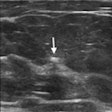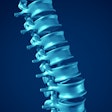Dear Imaging Leaders Insider,
The shortage of iodinated contrast media for CT exams in 2022 sparked widespread discussion on how hospitals can best navigate these disruptions, as well as be prepared in the event of future supply chain issues.
Switching to a multidose packaging and delivery system could pay off in several ways, according to a new study. Researchers from Vanderbilt University estimated that this change could reduce contrast media waste by nearly 75% and save hundreds of thousands of dollars. Our coverage of the study is the subject of this issue's Insider Exclusive.
The Fiscal Year 2023 Omnibus Appropriations Bill passed by the U.S. Congress on December 20 included measures to reduce some of the drastic Medicare physician pay cuts scheduled to take effect on January 1. But it did not fully offset them, and organizations such as the American College of Radiology (ACR) and the American Society for Radiation Oncology were very disappointed in the outcome. Sandy Coffta of Healthcare Administrative Partners (HAP) also assessed the impact of the Congressional action in a new column.
In other practice management articles included in this issue, Erin Stephens from HAP shared strategy tips for radiology practices participating in the U.S. Centers for Medicare and Medicaid Services' Quality Payment Program. And Sandy Coffta from HAP discussed the most pressing radiology practice management issues facing radiology today in a video interview at RSNA 2022.
Radiologists frequently experience musculoskeletal discomfort from using workstations. Fortunately, there are at least eight ways to mitigate the problem.
Researchers from the U.K. have revealed how their strategy for optimizing bone scan appointments for prostate cancer patients has led to significantly increased capacity. Also, reducing the use of sedation for pediatric brain MRI exams could yield substantial cost savings. Although most nonphysician radiology staff may not have much experience with global health initiatives, many would be interested in getting involved, according to a recent study.
Researchers from the U.S. Department of Veterans Affairs (VA) reported that mammography care coordination by VA medical centers is inefficient. Speaking of women's imaging, guidelines released by the ACR in 2018 increased follow-up breast MRI eligibility by fifteenfold among women with a previous history of breast cancer. And switching from real-time to batch offline mammography interpretation can lower abnormal interpretation rates.
Although the situation has improved, racial and gender disparities in academic radiology continue to persist, researchers have concluded. For patients receiving image-guided procedures, decision aids with lay-friendly language can help improve their understanding of the procedures without needing additional clinician time or effort.
Is there a story you'd like to see covered in the Imaging Leaders Community? Please drop me a line.




















